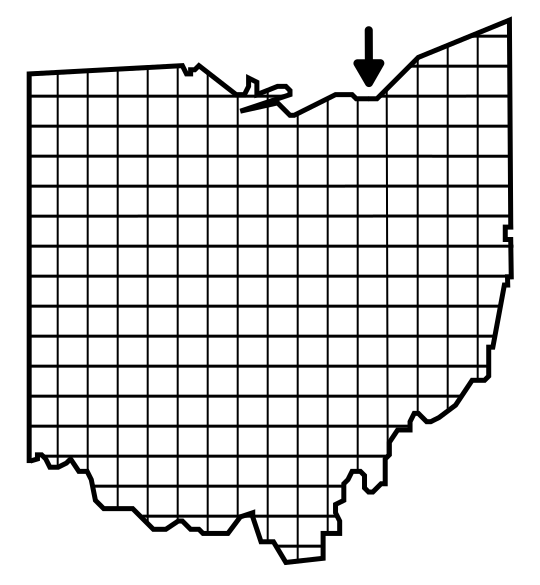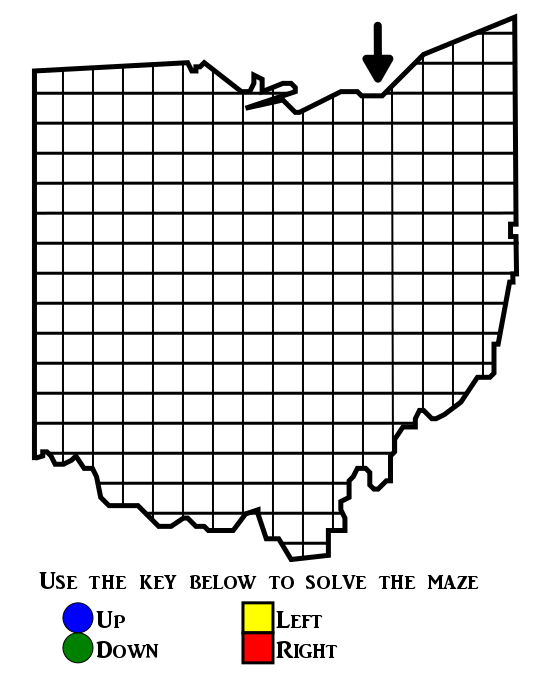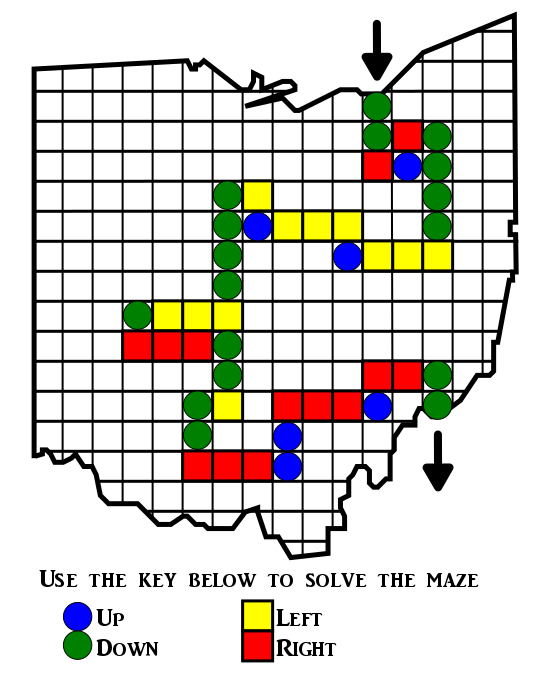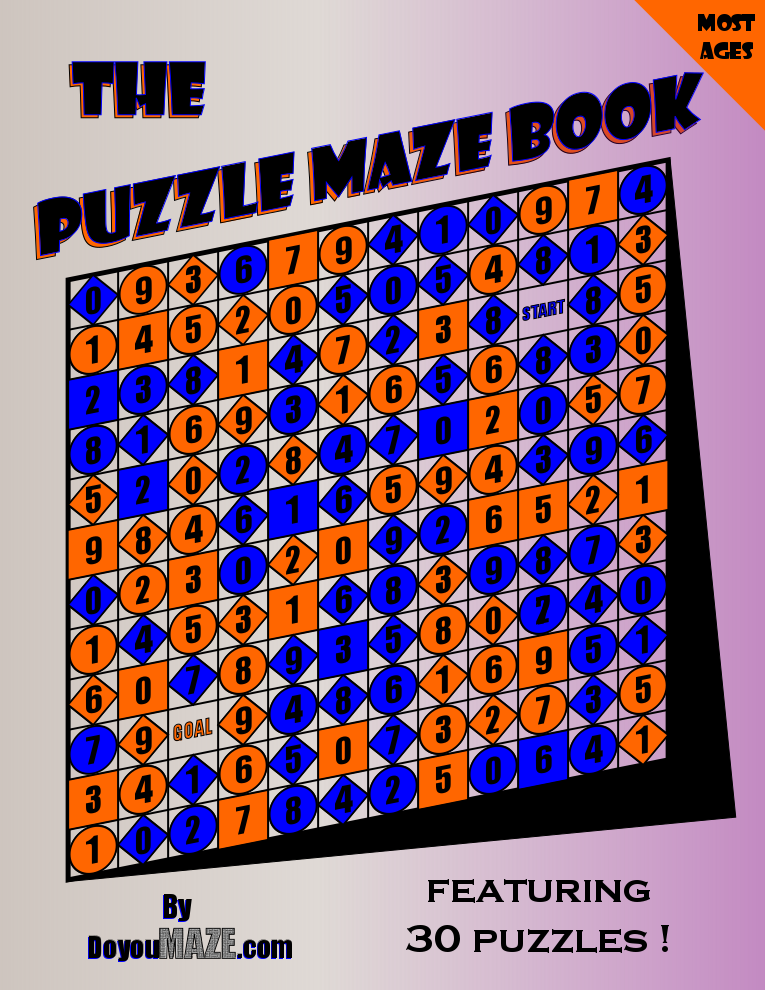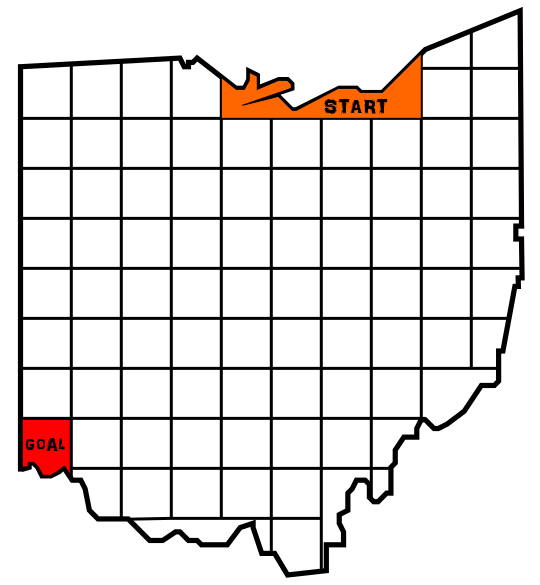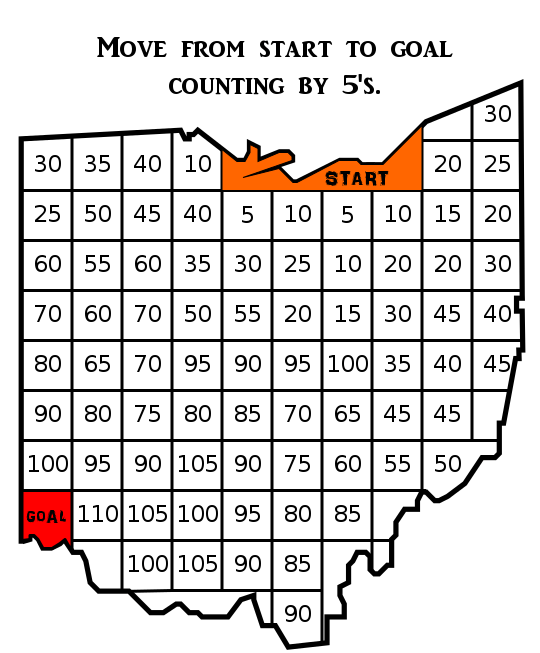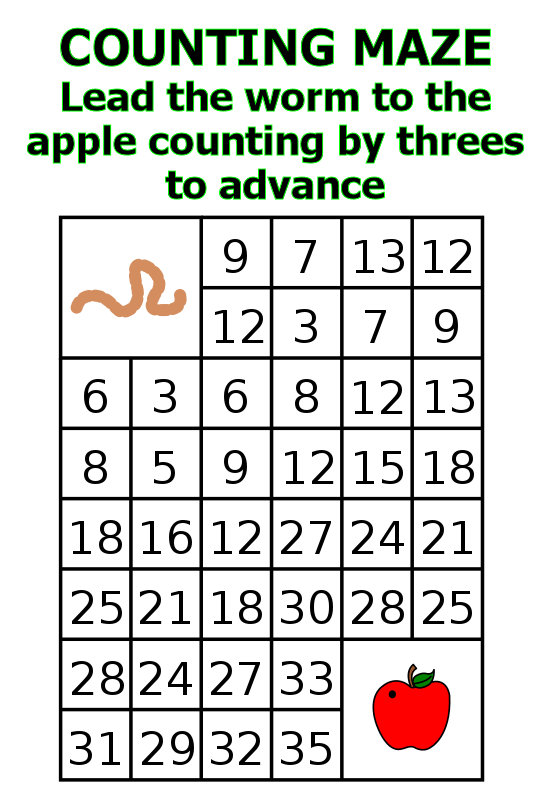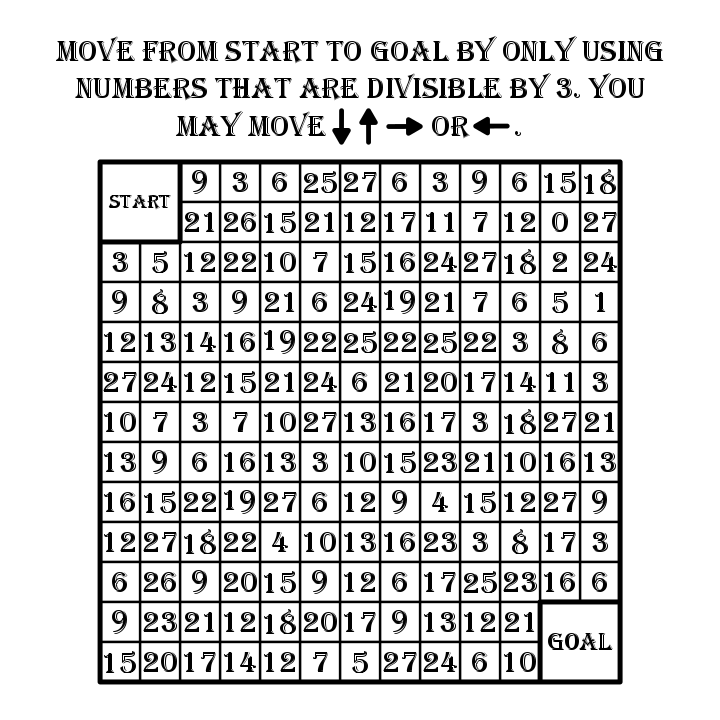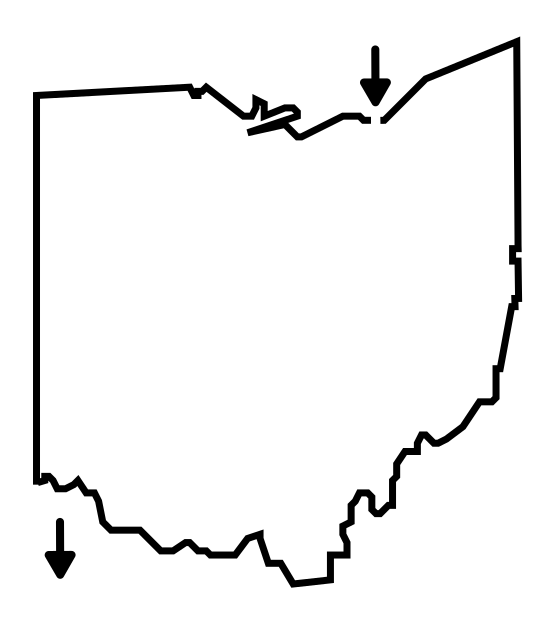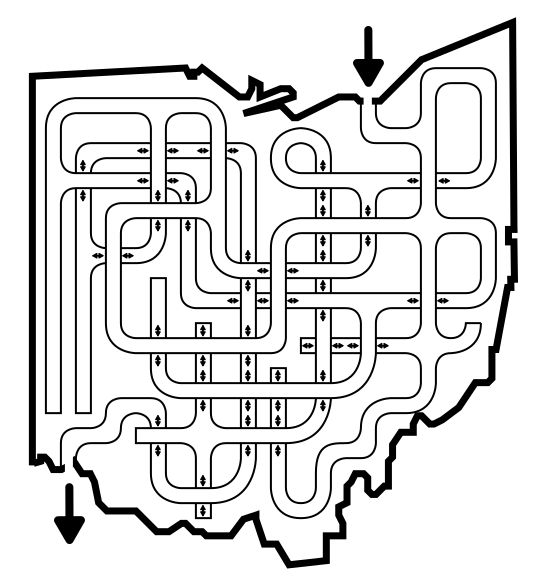In a series of posts I will show you how to make a maze in a wide variety of design constructions. The 32nd type of maze construction is the Color Grid maze. Let’s define what I mean, then get into the example. Every example will use the sample basic outline (the state of Ohio) to better illustrate the differences between each maze type.
Color Grid Maze - A type of conditional maze where movement between blocks is limited to a specific sequence of colors.
How to Make a Color Grid Maze
Step 1 - Draw the Outline
The outline of the maze makes the outer wall of the maze. It can be anything from a simple shape like a square, to a complex picture. The outline should be thicker than the internal lines to give the maze definition. In the example below I chose the state of Ohio.
Step 2 - Draw a Grid
Draw a grid to fill the outline of the maze.
Step 2.5 - Choose the Start and Goal (optional now)
For the below example I chose the start the corner of NE Ohio and the goal in SW Ohio. As with any gridded maze the start and goal can be either internal or external to the outline. In my example I used internal.
Step 3 - Add Directions to the Maze
Explain the conditional rules that will dictate the movement of the maze solver through the maze and add these directions. In my example I chose to move from block to block using red, white, and blue. I allow movement in any direction so I do not need to explain any limits since there are none (vs some mazes that only allow N,S,E,W movements and no diagonals).
Step 4 - Create the Solution
Make the solution to the maze based on the color condition you have chosen.
Step 5 - Create False Pathways (colored blocks)
Fill in any remaining blocks with incorrect options. Each block that you make a particular color needs to be considered - can this be used by the solver ? A completed color grid maze will always have one dominant color (in my example white) that helps create non-solutions to the maze more easily.
Step 6 - Create a Final Solution
Highlight the correct path in the final version of the maze to create the final maze solution (shown here in lime, with possible branches in pink). There will always be a third color that is dominant in the color grid (here white) that allows multiple different moves for what is essentially the same solution.
Additional Color Grid Maze Examples
And here is another example of a Color Grid maze using the same convention to solve as above, by moving from red to white to blue blocks. However, this maze is in a more typical square shape and uses external start and goal (denoted by arrows).
For my next example, I use colors in greyscale for a black and white book I am working on. Here in my directions I spell out that the solver may move in any direction.
And a third example, also in greyscale that was made on a larger grid (12x12), making it more difficult.
I did a 3 part blog series on maze constructions if you want to design your own type of maze. Part 3 includes all of the conditional maze options.
Part 1 - Starting and Ending a Maze - Speaks to the 9 most popular ways to start and stop a maze
Part 2 - Maze Path options - Explores the 12 different pathway options for a maze
Part 3 - Conditional Path options - Speaks to 11 different conditional options to add to a maze to make it more enjoyable
Interested in learning how to make or draw other types of digital mazes ? I have step by step instructions on how to make over 40 different maze types.
If you prefer making labyrinths, you can find step by step labyrinth making instructions.










